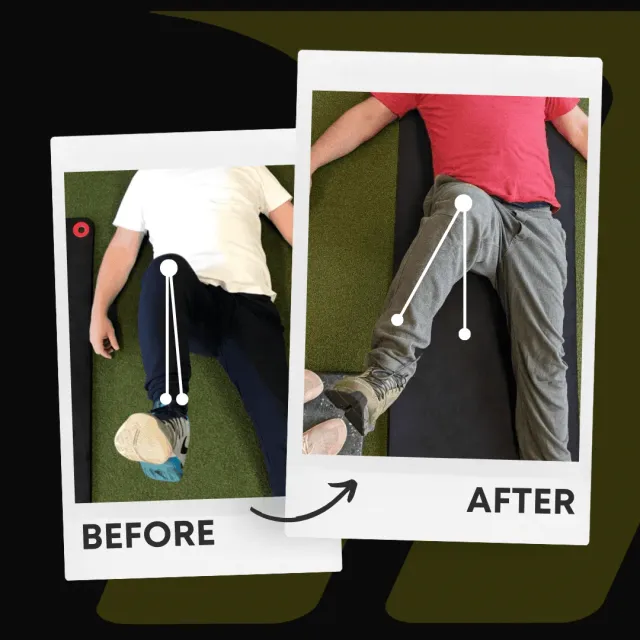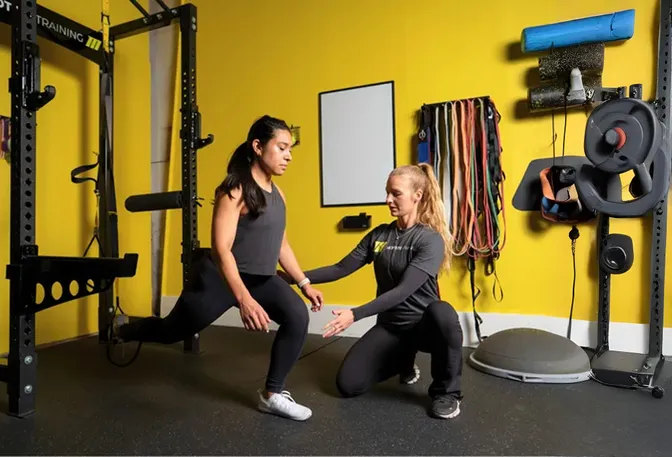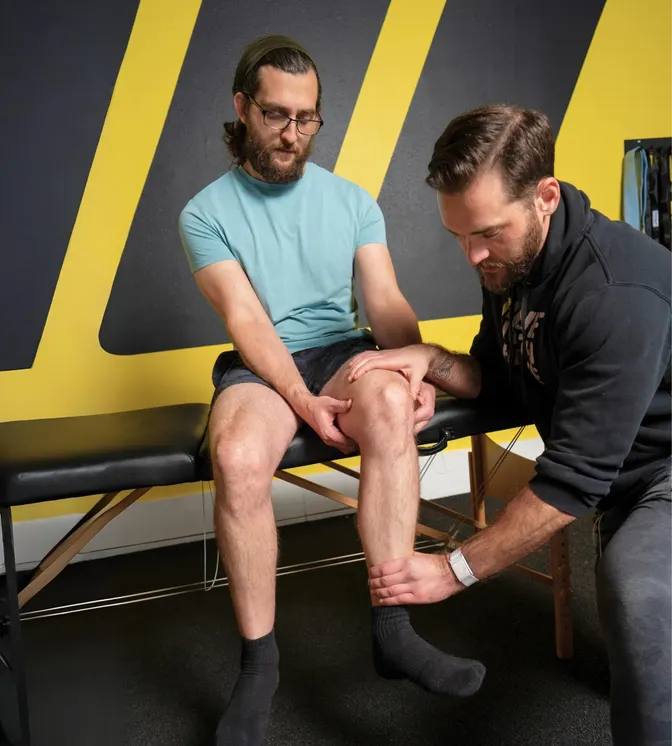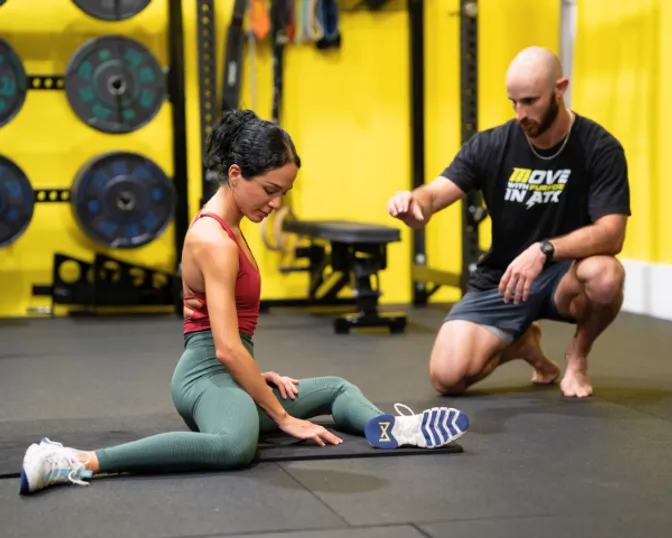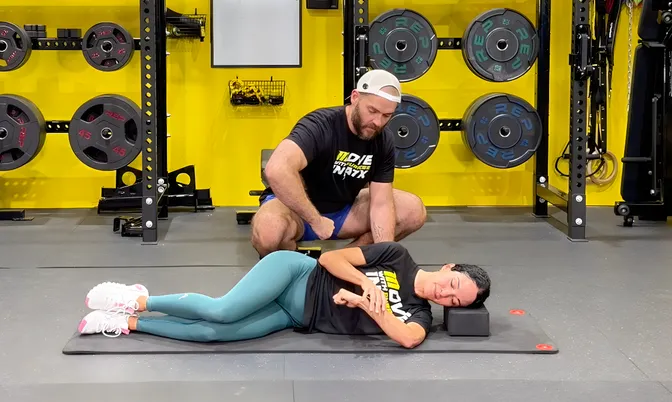Essential Guide to Postpartum Workout Programs for New Moms
May 4, 2025 | Postpartum
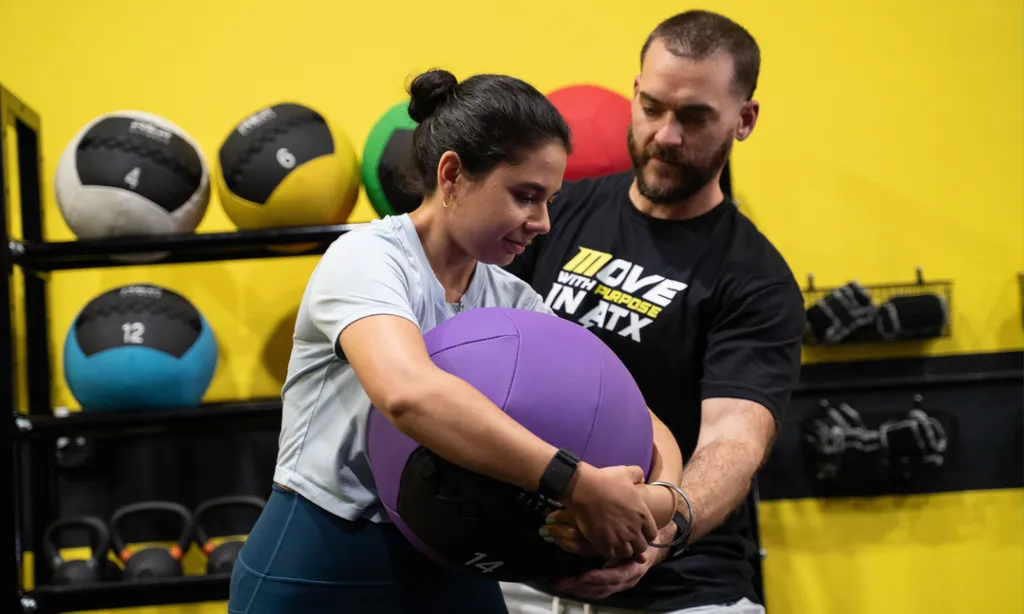
Understanding Postpartum Workouts
What Is a Postpartum Workout Program?
A postpartum workout program isn’t about snapping back. It’s about restoring strength, control, and coordination after one of the most demanding events a body can go through—childbirth. These programs are designed to meet women where they are, rebuilding from the inside out. They focus on pelvic floor rehab, core integrity, breathing mechanics, and joint health.
At Motive Training, we don’t throw moms into group classes and hope for the best. We assess, personalize, and progress with intention. We also acknowledge the identity shift that happens in this phase—because it’s not just a physical transformation. It’s emotional, psychological, and logistical. Training must respect all of that.
Why Postpartum Workouts Are Important
New moms face sleep deprivation, hormonal shifts, and a total overhaul of their physical routines. Without strategic training, it’s easy to fall into patterns that lead to back pain, pelvic dysfunction, and instability. Exercise helps restore balance—but not all exercise is created equal.
Functional Range Conditioning (FRC) gives postpartum women a framework to safely restore joint health, rebuild strength from the deepest layers of tissue, and regain control over how their body moves and feels. It allows us to train the inputs (joint function, capsular strength, rotational control) before rushing into outputs like heavy lifting or high-intensity training.
FRC principles like isometrics, CARs, and progressive tissue loading create a safe environment to test, challenge, and rebuild tissue resilience—without compromising healing.
Physical Changes After Childbirth
Childbirth impacts every layer of the system—muscular, fascial, hormonal, and neurological. Postpartum bodies carry the imprint of nine months of adaptation followed by a single intense, high-stress event.
Key Changes to Account For:
- Pelvic floor dysfunction - Pressure from pregnancy and labor can weaken or disrupt control. This affects stability, coordination, and even breathing mechanics.
- Core instability and diastasis recti - Ab separation changes how force is transferred through the torso. Postpartum training must retrain intra-abdominal pressure before loading the system.
- Joint laxity - Hormonal effects like elevated relaxin levels can persist for months, increasing the risk of injury without proper control.
- Thoracic and cervical stiffness - Nursing, feeding, and baby-carrying promote forward flexed postures. Without intervention, this leads to long-term neck and upper back issues.
- Respiratory dysfunction - Many postpartum women lose access to full diaphragmatic breathing, which affects core control and recovery capacity.
At Motive Training, we use FRC to address these changes one joint and one pattern at a time. Every movement has a goal—and every session is about reclaiming what was lost.
Key Components of a Postpartum Workout Program
Strength Training Focus
Postpartum strength is about reclaiming capacity—not maxing out. Early strength work should focus on:
- Controlled breathing and intra-abdominal pressure
- Isometric contractions to restore tension (FRC PAILs/RAILs are ideal)
- Joint articulation and positional awareness
- Building control before adding complexity or load
We don’t jump into squats and presses just because someone feels “cleared.” We train your joints and foundation so that you can get back to movement safely and efficiently.
These build internal strength and coordination first. External strength comes later.
Cardio and Endurance Activities
Endurance work isn’t just about VO2 max—it’s about function and capacity. For postpartum moms, the first goal is sustainable movement that supports energy, lymphatic flow, and emotional well-being.
We recommend:
- Walking daily (ideally with nasal breathing)
- Incline treadmill work or rucking for increased load
- Tempo intervals on a bike or rower
- Flow-based mobility sequences to build rhythm
We also use light rope flow or rhythmic step patterns to help rebuild rotational control and body coordination. When the nervous system feels safe, the body moves better.
Creating a Personal Training Plan
There is no universal timeline for postpartum recovery, and any coach who trains based on “week 6 equals go time” is missing the point. Every woman’s story is different—so her plan should be, too.
At Motive Training, each postpartum client starts with a Functional Range Assessment (FRA) to identify:
- Joint limitations or instability
- Motor control deficits
- Asymmetries in strength or range of motion
- Breathing and bracing patterns
From there, we layer in strength, control, and structure. We don’t throw exercises at a client to see what sticks. We target the system’s weak links, reinforce structure through isometrics and tissue-specific loading, and build from the ground up.
We also adjust week to week. If sleep is terrible and recovery is down, we’ll pivot. Training postpartum requires adaptability—just like motherhood.
Safety Tips for Postpartum Workouts
Here’s what we prioritize to protect the healing process:
- Get medical clearance first, especially after a C-section or complicated delivery
- Start slow, focusing on breathwork, control, and coordination
- Avoid early impact or bracing-based work until pelvic floor signs have normalized
- Check for red flags like doming, coning, pain with movement, or leaking
- Progress by capacity—not by calendar
We use FRC methods to load deep ranges safely. A well-timed hip PAILs sequence or thoracic rotation isometric may do more for a postpartum body than a whole hour of generic HIIT.
Challenges New Moms Face in Exercise
Postpartum fitness isn’t just a physical challenge—it’s logistical, emotional, and cultural. Common barriers include:
- Time and childcare constraints - It’s hard to train when you’re responsible for another human 24/7.
- Mental and emotional load - Depression, anxiety, and burnout are real and must be acknowledged.
- Overwhelm - So much noise exists around what moms should be doing. It’s hard to know what’s useful and what’s marketing.
At Motive Training, we make space for all of this. No guilt. No pressure. Just real conversations and strategies that fit your life and body today.
Conclusion and Encouragement
You don’t need a perfect plan. You need the right plan—one that meets you where you are and moves you forward without creating new problems along the way.
Functional Range Conditioning is one of the most powerful tools we have for rebuilding postpartum bodies—because it doesn’t skip steps. It restores control. It respects the nervous system. And it builds true strength from the inside out.
If you’re in Austin and ready to start, we’re here. And if you’re not, start small. Reclaim your breath. Move your hips. Own your spine. Build from there.
You carried a child. You can carry this too.
Written by
Brian Murray, FRA, FRSC
Founder of Motive Training
We’ll teach you how to move with purpose so you can lead a healthy, strong, and pain-free life. Our headquarters are in Austin, TX, but you can work with us online by signing up for KINSTRETCH Online or digging deep into one of our Motive Mobility Blueprints.
